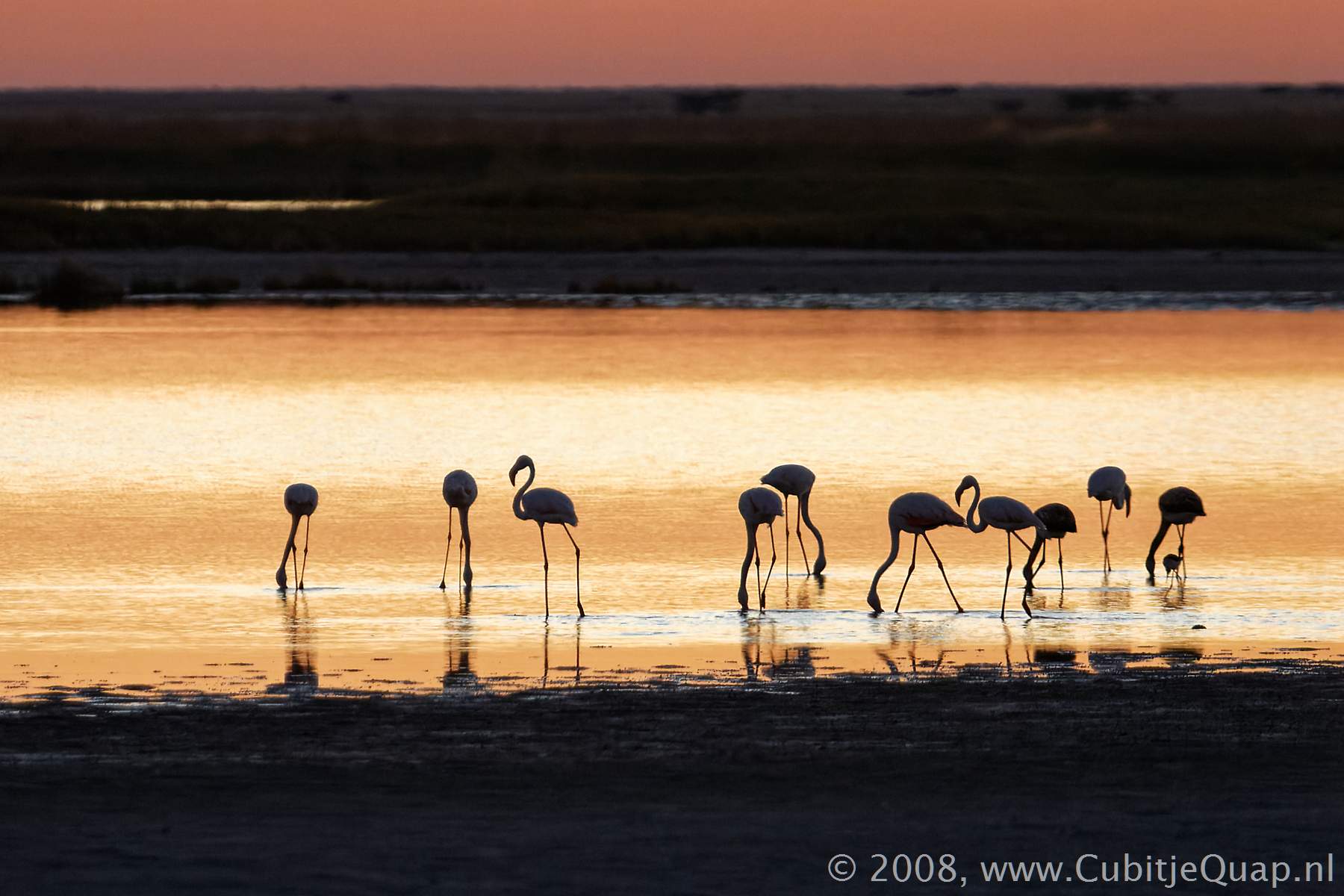Flamingos Information page
Description
Unique, gregarious, long-legged, pink waterbirds. Highly specialized filter feeders; when foraging, hold bill upside down and sweep from side to side, while using their tongue to pump water and mud through fine bristles on bill. They use foot-trembling to disturb bottom sediments to improve foraging succes. They primarily feed by wading, but they can swim and filter-feed in deep water. Greater flamingo eats aquatic invertebrates (brine shrimp, chiromonid fly larvae and copepods) while lesser flamingo consumes cyanobacteria and unicellular algae. Pink sheen on the plumage is due to carotenoids in their diet.Calls consist of goose-like honking. In the breeding season, ritualised and synchronised courtship displays are undertaken by hunderds of flamingos marching in unison, spreading wings and head-flagging. They are monogamous, but new mates are generally sought every year. Nests are formed in huge colonies at disturbance-free saline wetlands (mostly Etosha and Sua pan in Southern Africa), building turret-like mud mounds, up to 45 centimeter high, and laying a single chalky, white egg. Incubation is done by both parents. On hatching, chick eats its own eggshell and is then fed for several months with a unique crop secretion that contains water, fats, protein and blood. Chicks leave the nest after one week and congregate in enormous crêches. Juveniles regocnise their parents voices and are thus identified in the crêche.
Scientific names
Phoenicopterus = red wingBirds in this category
Interesting links
Wikipediafatbirder.com

